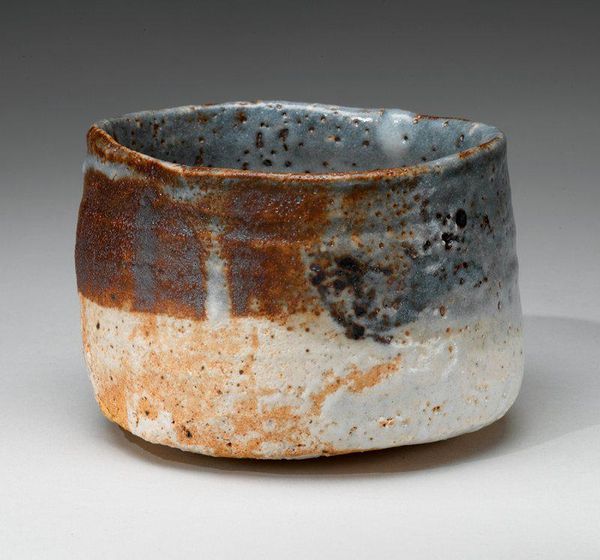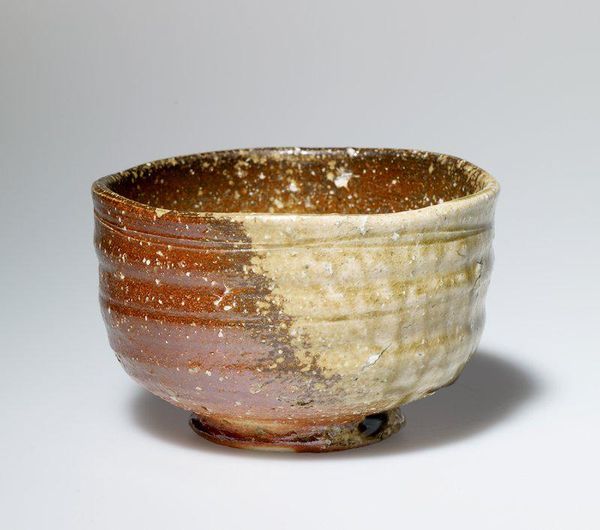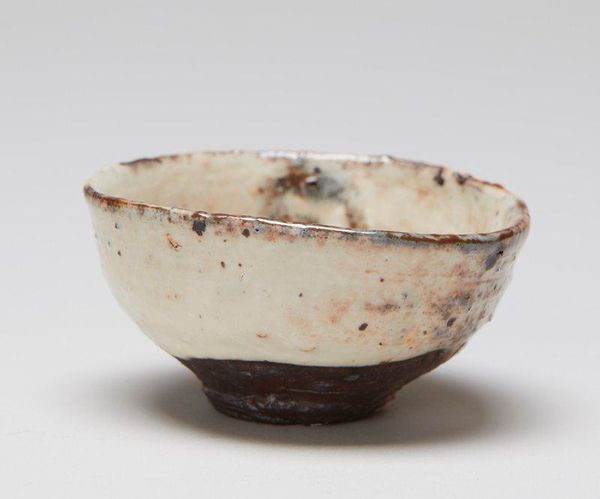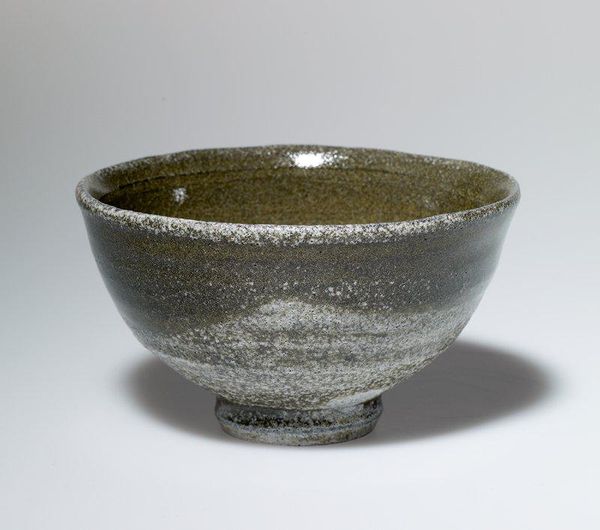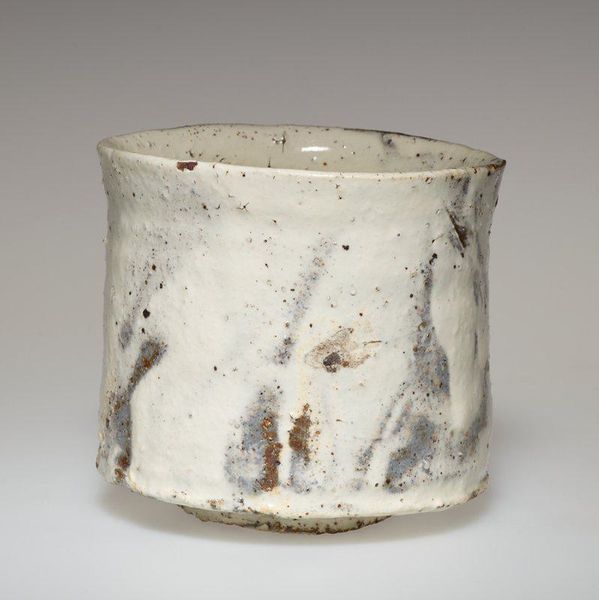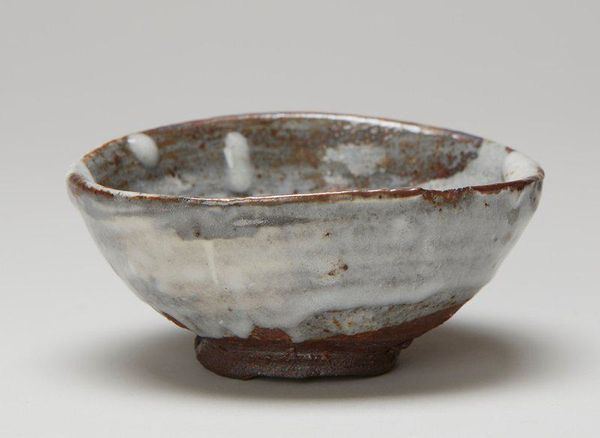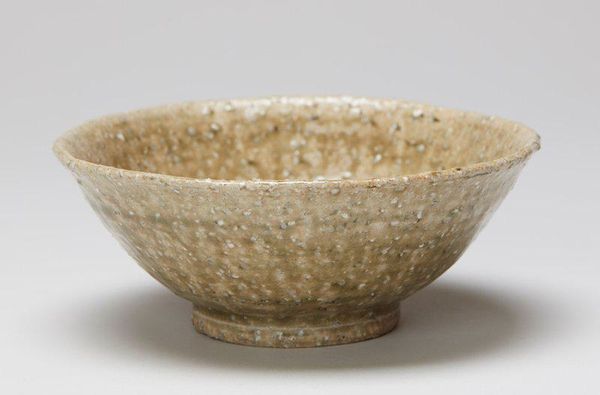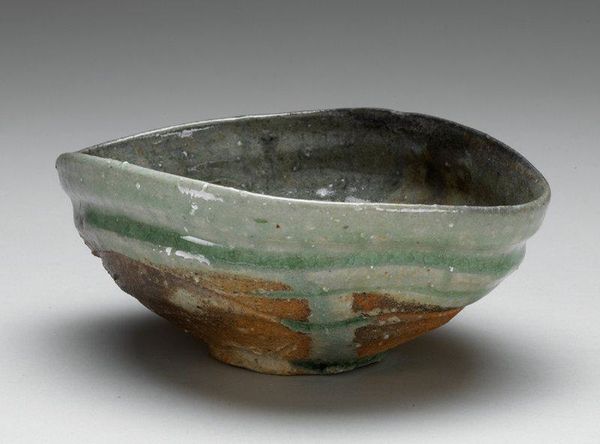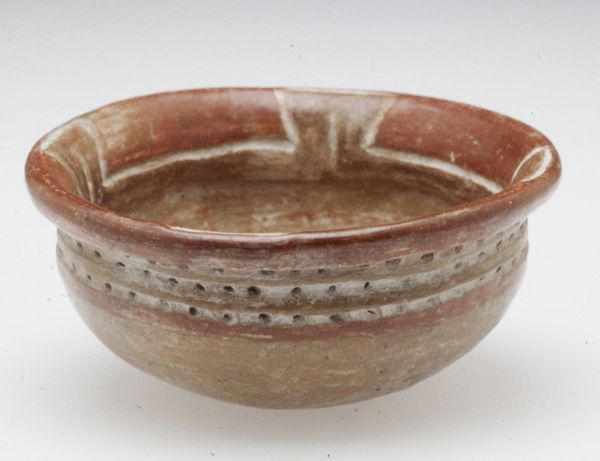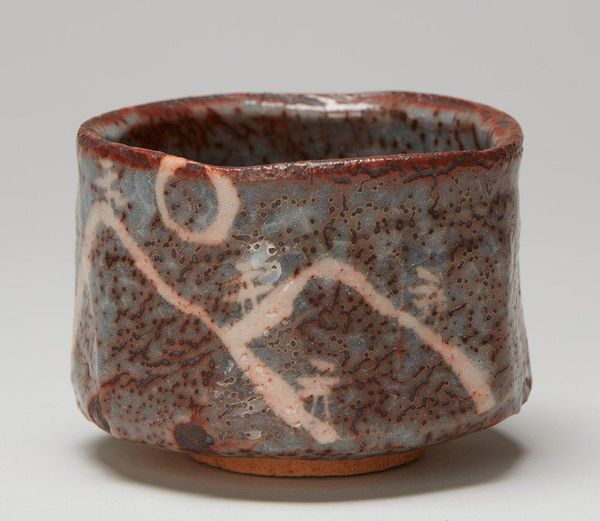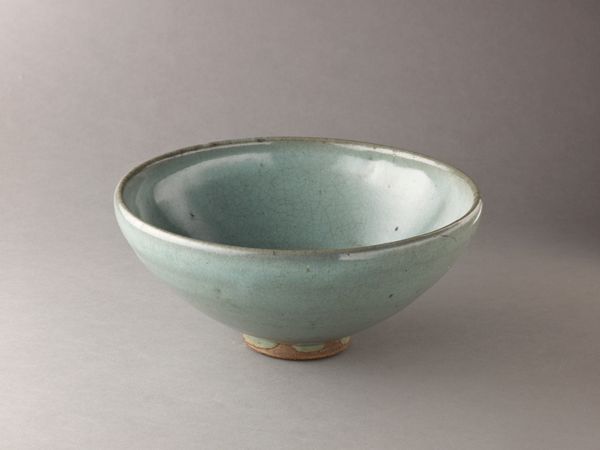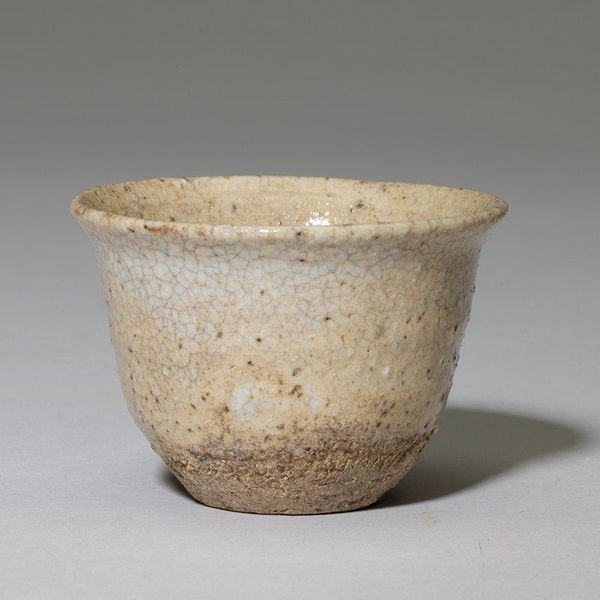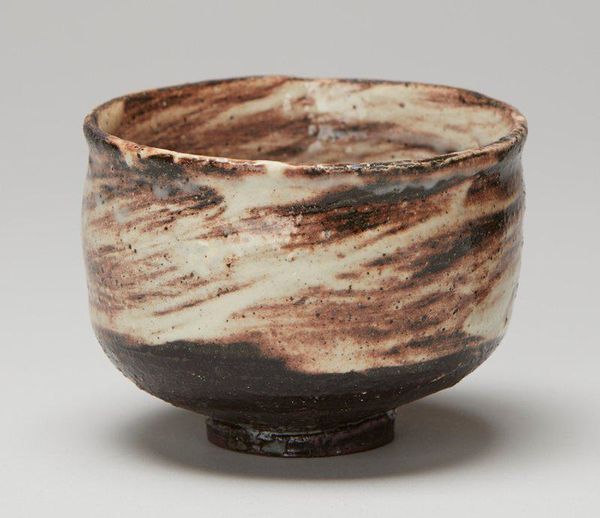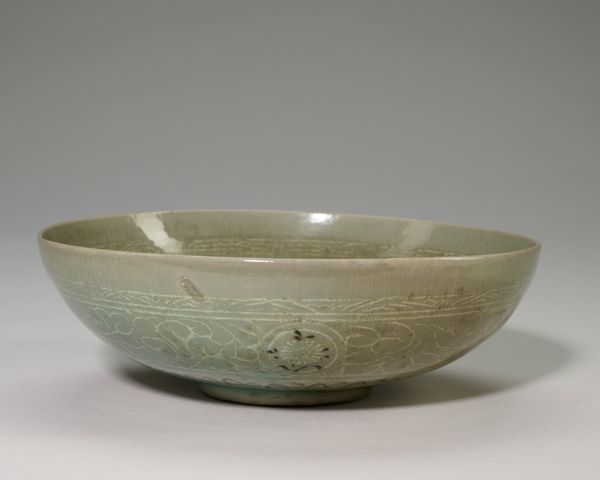
ceramic
#
asian-art
#
ceramic
#
japan
#
stoneware
Dimensions: 3 1/2 x 5 1/4 x 5 in. (8.89 x 13.34 x 12.7 cm)
Copyright: No Known Copyright
Curator: Here we have a Japanese tea bowl, a chawan, likely crafted sometime in the 20th century, currently held here at the Minneapolis Institute of Art. Editor: There's a quiet beauty to it, isn't there? The textured stoneware, those earth tones mixing with softer blues and whites, it feels very grounded and serene. Curator: Absolutely. Looking closer, one sees the fingerprints of its making. Consider the significance of such tea bowls in Japanese tea ceremonies; wabi-sabi, accepting transience and imperfection, is central. The form, the subtle glaze variations – all these would be intensely scrutinized. Editor: And by whom, precisely? Whose traditions are being centered? The elite, surely, which complicates the ‘humble’ aesthetic of wabi-sabi. How does a working-class individual access these highly curated and ritualized experiences? It provokes questions around access and the selective celebration of certain aesthetics. Curator: True, the institutional framing and the social hierarchies embedded in tea culture can’t be ignored. But even within that context, potters often challenged conventions, pushing the boundaries of form and glaze techniques, imbuing these objects with individuality, resistance to purely functional roles, or class status markers. Editor: That tension, that constant negotiation between tradition and subversion, it's palpable. This isn’t just a vessel, but an assertion. An assertion that honors the past while simultaneously critiquing it. Thinking of cultural appropriation, are such powerful Japanese traditions well protected? It gives me some comfort to imagine an Asian person seeing their traditional forms and colors here today. Curator: A crucial point to consider. These objects move across collections, changing ownership and context. We must address ethical considerations in how we collect, display, and interpret art from cultures other than our own. Editor: Indeed. The act of observing requires both historical knowledge and critical self-awareness, not merely passive viewing but also engagement. I’m drawn to what this specific item embodies. Curator: For me, studying the tea bowl connects us to both intimate rituals and larger social structures. The history embedded in objects like this allows us to better understand both the potter’s individual vision, and broader socio-cultural practices that the bowl participated in and pushed back against.
Comments
No comments
Be the first to comment and join the conversation on the ultimate creative platform.
